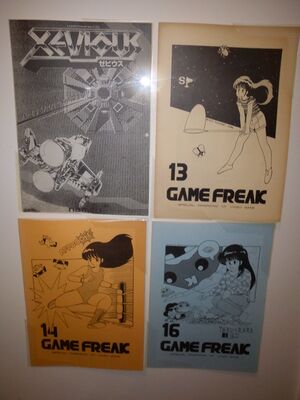Game Freak
Game Freak, Inc. (Japanese: 株式会社ゲームフリーク Kabushiki gaisha Game Freak), officially stylized as GAME FREAK inc. or less commonly as GAMEFREAK inc., is a Japanese game development company founded on April 26, 1989 by Satoshi Tajiri, Ken Sugimori, and Junichi Masuda. Game Freak is responsible for the development of the core series Pokémon games, as well as the free-to-play spin-off game Pokémon Quest.
Game Freak shares ownership of The Pokémon Company with Creatures, Inc. and Nintendo. The company currently employs a staff of 143 as of December 2019,[1] while Satoshi Tajiri serves as its current CEO. Its headquarters are on the 7th floor of Kanda Square in Chiyoda, Tokyo, Japan.
Game Freak acquired the mobile development company Koa Games on October 2015.[2]
History
Early history
Satoshi Tajiri's background
The origin of the name "Game Freak" refers to a nickname used in Japan to refer to avid arcade game fans during the 1980s. At this point, competitive players including children used the term Urawaza (Japanese: 裏技, Secret Technique) in the context of video game strategy, although Masanobu Endo (creator of Xevious himself) was not a fan of the potential conflict at the arcades (this atmosphere is also covered in Satoshi Tajiri's 1990 book about his youth as an arcade game fan "A Catcher in Pac-Land" (Japanese: パックランドでつかまえて), as this included video game secrets that were proven to be false (such as the Xevious Star) and their veracity was subject to heated debate. He also did not want players to be spreading falsehoods and reportedly got angry regarding an interview about Xevious Star, but at the same time settled fans down from arguing during a visit. Another issue is that some of these techniques were (sometimes unknowingly) actually bugs (glitches) in the code.[3]
Satoshi Tajiri himself was an avid fan of arcade games, and once met Masanobu Endo at the arcades. Occasionally, prototypes of new games were also released at specific Game Centers, such as one at Chiyoda, Tokyo famous for showcasing new Sega games. Satoshi Tajiri himself enjoyed visiting it.[4]
He also identified as a "Game Freak" (as seen in video game magazines he wrote to), and other than his other interests like bug-catching, enjoyed writing about video games. In 1983, he self-published the Game Freak magazine series for strategy/hidden techniques in arcade games. When Ken Sugimori discovered it, he became Satoshi Tajiri's friend and part of Satoshi Tajiri's Game Freak circle (and magazine staff).
Furthermore, Satoshi Tajiri stated in a May 2000 interview at Game Freak headquarters that the concept for the Pokémon Mew (although Shigeki Morimoto programmed and designed it into the game) as an "illusory Pokémon" was inspired by rumors at the arcades (including from the Game Freaks), specifically a hidden/unused F4 phantom fighter ship in Xevious. This was republished for a Japan-exclusive December 2000 book called Pokémon Story.[5]
Game Freak magazine
It was also around this time also arcade game fans wanted to know how video games worked, and to compete as Game Freaks. Notably, Xevious expert at the time Yasuhiro Ohori (Japanese: 大堀康祐) (pseudonym Urusei Anzu) discovered how to score 10 million points in Xevious with the help of programming errors, and had his Mini-Comi "How to Score 10 Million Points in Xevious" (Japanese: ゼビウス1000万点への解法) published with fellow Game Freak Naohiko Nakagane (Japanese: 中金直彦). Coinciding with the Game Freak magazine series, Game Freak magazine republished their own version of the original as well.
The first Game Freak magazine (1983) featured Taizo Hori from Dig Dug on the front cover, and mentioned "Tajiri Corp." (although at the time, it was not an official corporation/company until 1989, also changing its name to Game Freak Co.). Run chiefly by Tajiri, with art made by Sugimori, the magazines typically were released at a length of around 28 pages and at a price of ¥300 (roughly US$3). Initially, the magazine was handwritten, but Tajiri later outsourced this to a professional printing company.
Video games before Pokémon
In 1989, Tajiri published his first video game, Quinty, which was localized as Mendel Palace for its North American release. In the same year, Game Freak was officially incorporated, and began work on several video games for the two largest players in the industry at the time, Nintendo and Sega. Among these games were licensed titles such as Yoshi and Mario & Wario, as well as original games such as Pulseman and Smart Ball.
Print media before Pokémon
Other than Game Freak magazine, Satoshi Tajiri was also the author of the 1990 book "A Catcher in Pac-Land" and the 1995 book New Game Design. There was also a (possibly internal) 1993 Game Freak New Year postcard by Ken Sugimori thanking someone for their help the previous year (also revealing prerelease art of Kangaskhan and Exeggutor). This was later revealed to the public in a special 1999 edition of Game Freak magazine, though the official scan may only be in black and white.[6]
Pokémon
Though the idea for what would become the Pokémon games had existed in Tajiri's mind for a while, actual development of the Pokémon idea began as Capsule Monsters in 1990.
In early 1990, Tajiri pitched the idea to Ape (Creatures, Inc.) and Nintendo, with a contract to finish it in October that year; however, it was rejected, and issues trademarking the name led Tajiri to change it, first shortening it to CapuMon, then changing it to Pocket Monsters. Additionally, according to the official book Game Freak Asobi no Sekai Hyoujun o Nurikaeru Creative Shuudan written by Akihito Tomisawa (a developer from Game Freak), Tsunekazu Ishihara states Creatures, Inc. had their own prototype for a game called "Toto" with a similar creature collecting concept; so Creatures, Inc. rejected it out of respect for Tajiri.[7]
With further revision of the idea, Tajiri pitched it again to Nintendo, and with the confidence of Shigeru Miyamoto swaying the decision, development was finally greenlighted.
Though the franchise is currently one of the most successful game franchises in the world, development of Pokémon Red and Green was incredibly difficult for the team at Game Freak, with the six-year development period and low finances of the company causing many of the staff to leave for other employment. Tajiri himself worked long hours, many of them unpaid, in order to bring Pokémon out, finally releasing them on February 27, 1996. An international success overnight, Game Freak became recognized as one of the best game developers Nintendo had working for them, leading to their second-party status.
Since Red and Green, Game Freak has developed all core series games, as well as the free-to-play spin-off game Pokémon Quest; other games, including the battle arena games and GameCube RPGs Pokémon Colosseum and XD, have been developed by other Nintendo affiliates and subsidiaries. The Game Boy Camera, more of an add-on to the Game Boy than a game itself, had its image editing software developed by Game Freak as well.
Later non-Pokémon work

Though Game Freak has mainly developed the Pokémon series since its 1996 debut, it is responsible for five games released since then that were not Pokémon-related. Click Medic, a Japan-only medical simulation game for the PlayStation, plays similarly to Pokémon, though instead of monsters, features a doctor using various vaccines and antibodies to fight against viruses and other maladies inside of a patient's body.
Another game, Drill Dozer, was released for the Game Boy Advance in the interim between the release of Pokémon Emerald and Pokémon Diamond and Pearl, featuring a young girl who operates a drilling machine in order to take down enemies in each of the worlds.
HarmoKnight, a rhythm-based action game for Nintendo 3DS developed by Game Freak, was released in Japan in 2012 and internationally in 2013, via the Nintendo eShop. HarmoKnight also features some music from the Pokémon games.
Pocket Card Jockey, a game that mixes solitaire and horse racing, was released for the Nintendo 3DS in Japan in 2013 and internationally in 2016, via the Nintendo eShop. It was later ported to Android and iOS in Japan, making it the first Game Freak game to be released on a non-Nintendo system since Click Medic.
In March 2015, Game Freak announced Tembo the Badass Elephant, to be published by Sega for PlayStation 4, Xbox One, and Microsoft Windows. It is the first title by Game Freak not released on a Nintendo system since Click Medic. It features the titular elephant fighting against an evil invading army.
In September 2018, Game Freak announced Little Town Hero, a role-playing game unrelated to Pokémon. It was released for the Nintendo Switch in October 16, 2019, as well as on the PlayStation 4 and Windows computers the following year.
Philosophy
Game Freak's philosophy, as stated on their website, is "To give the people of the world enjoyment, fun and discovery by continuously creating games of superior quality. And to encourage bravery, hope, kindness, dreams and an adventurous spirit." This philosophy is easily seen in the Pokémon games, where the player must fight bravely against the various villainous teams, journeying across their region with their Pokémon by their side.
Key people
- Satoshi Tajiri (田尻 智), founder, CEO, chairman of the board
- Ken Sugimori (杉森 建), board member, art director
- Jun'ichi Masuda (増田順一), board member, head of development
- Takenori Ōta (太田健程)
- Shigeki Morimoto (森本茂樹)
- Motofumi Fujiwara (藤原基史)
- Kōji Nishino (西野弘二)
Affiliates
- Staff from Ape/Creatures, Inc. (notably Tsunekazu Ishihara and formally Shigesato Itoi as the founder of Ape)
- Staff from Nintendo (notably Shigeru Miyamoto)
In the games
Game Freak employees appear in every core series game besides Pokémon Legends: Arceus. The main reason to visit them is to obtain a diploma, awarded after the completion of the Pokédex. In Pokémon HeartGold and SoulSilver, the sound designer gives the GB Sounds after the player has obtained all 8 Kanto Badges.
Their headquarters are located on the third floor of the Celadon Condominiums. They have their own office on 22F of a building in Castelia City, just like in their former real-world office in Carrot Tower. They also have an office on the second floor of a building in Heahea City. In Hoenn, a group of Game Freak employees are on vacation, staying in Lilycove City's Cove Lily Motel; in Sinnoh, a single member is staying at the Hotel Grand Lake; in Kalos, the game director can be found staying at the Hotel Coumarine in Coumarine City; in Galar, a group of Game Freak employees can be found staying in Hotel Ionia in Circhester.
In Pokémon Black and White, the player can battle a character representing Shigeki Morimoto in the office after stopping Team Plasma. In Black 2 and White 2, they can also battle Kōji Nishino, who uses a Snorlax as his highest leveled Pokémon, a reference to his nickname カビゴン Kabigon, after which Snorlax is named (in the English versions, he calls himself Snorlax). Both Morimoto and Nishino have the Trainer class GAME FREAK. In Pokémon Sun and Moon and Pokémon Ultra Sun and Ultra Moon, the player can battle Morimoto in the Game Freak office, who will give the player an Oval Charm the first time he is defeated; this battle is located in Hotel Ionia in Pokémon Sword and Shield.
The company itself also appears in Pokémon Sword and Shield as one of the sponsors of Leon, the Champion of the Galar League.
Logo screen

|
This section is incomplete. Please feel free to edit this section to add missing information and complete it. Reason: Gen VI to VIII screens |
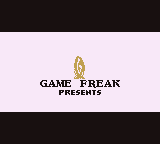
|
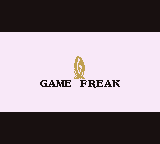
|
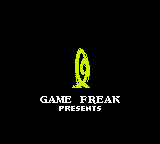
|
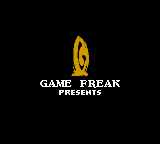
|
| RGBY | RBY | GS | C |
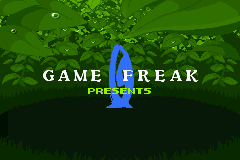
|
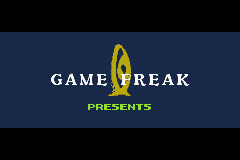
|
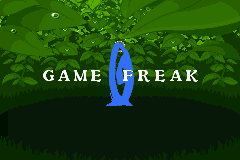
|
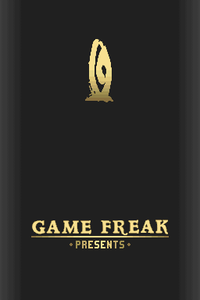
|
| RS | FRLG | E | DP |
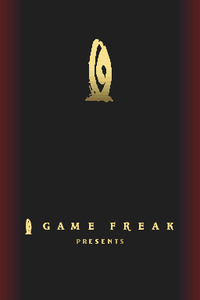
|
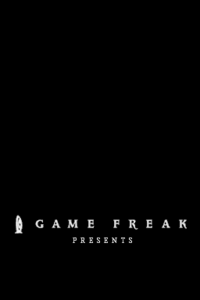
|
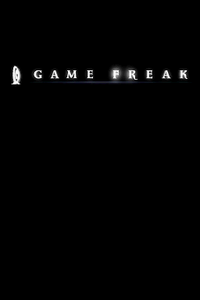
| |
| Pt | HGSS | BWB2W2 |
Related articles
External links
- Wikipedia article
- NintendoWiki article
- Super Mario Wiki article
- StrategyWiki category
- Official website (Japanese)
References
- ↑ 会社概要 | GAME FREAK 株式会社ゲームフリーク オフィシャルサイト
- ↑ 『ポケモン』開発会社として知られるゲームフリーク、スマホゲーム開発会社のコアゲームスを吸収合併…『官報』で判明 (in Japanese)
- ↑ The Game Freaks Who Play With Bugs – Discussions on the Video Game Xevious (Japanese: ゲームフリークはバグと戯れる―ビデオゲーム「ゼビウス」論) (Nakazawa Shinichi) (1984) (Translations from Jérémie Pelletier-Gagnon and Tsugumi Okabe for Geemu Media Mix Volume 5, Issue 1, December 2015, University of Alberta, Edmonton, Alberta, Canada)
- ↑ Interview between Masanobu Endo, Satoshi Tajiri, Ken Sugimori - Denfaminicogamer (February 8, 2016)
- ↑ Mew's Origins: A Story of Secrets, Rumors & Legends Ft. maxmoefoe (Pokémon) - DidYouKnowGaming?
- ↑ Tweet by Torchickens based on the Instagram post by hapycakeoven containing the scan of the postcard from the 1999 Game Freak magazine.
- ↑ YouTube video by DidYouKnowGaming? citing the book

